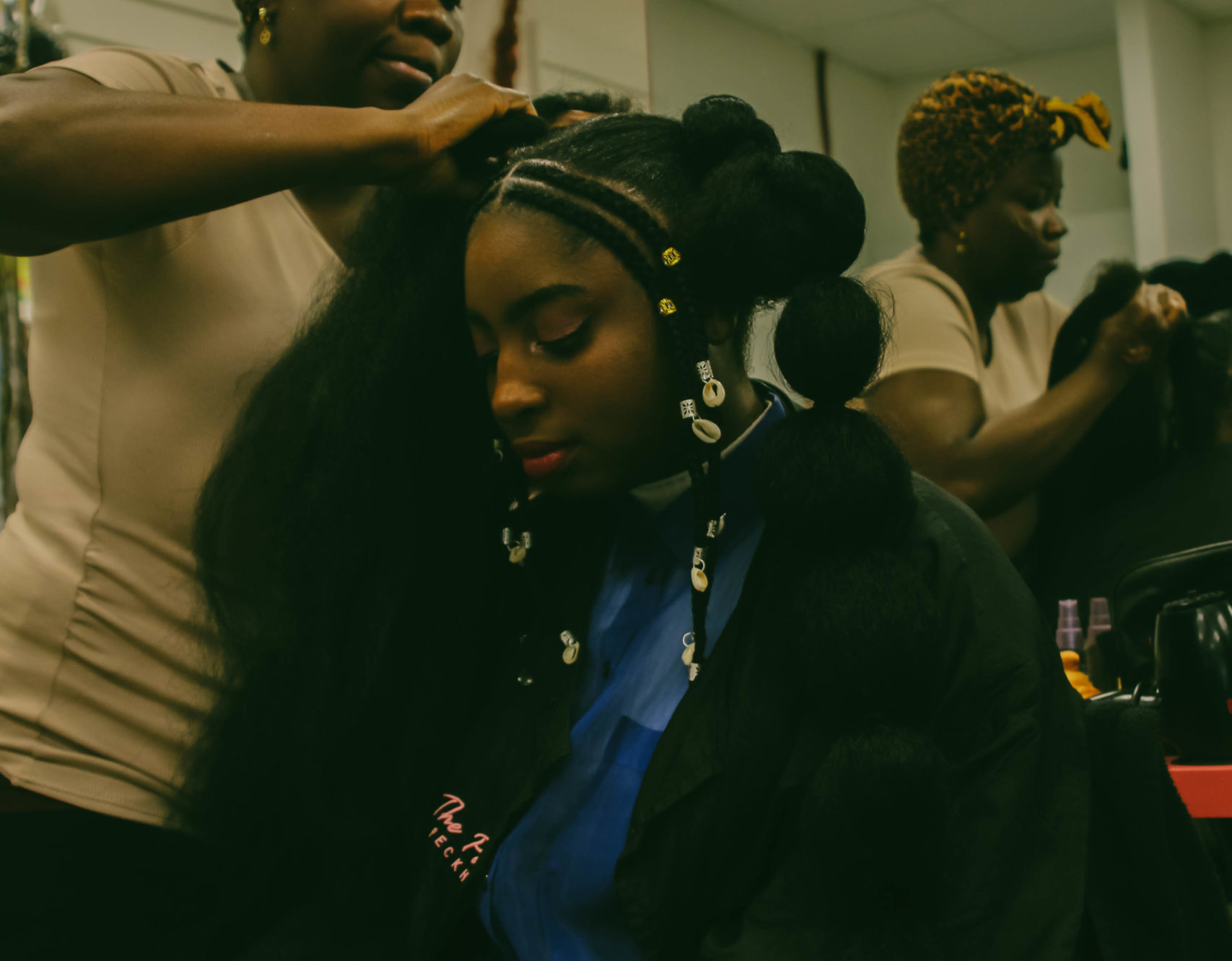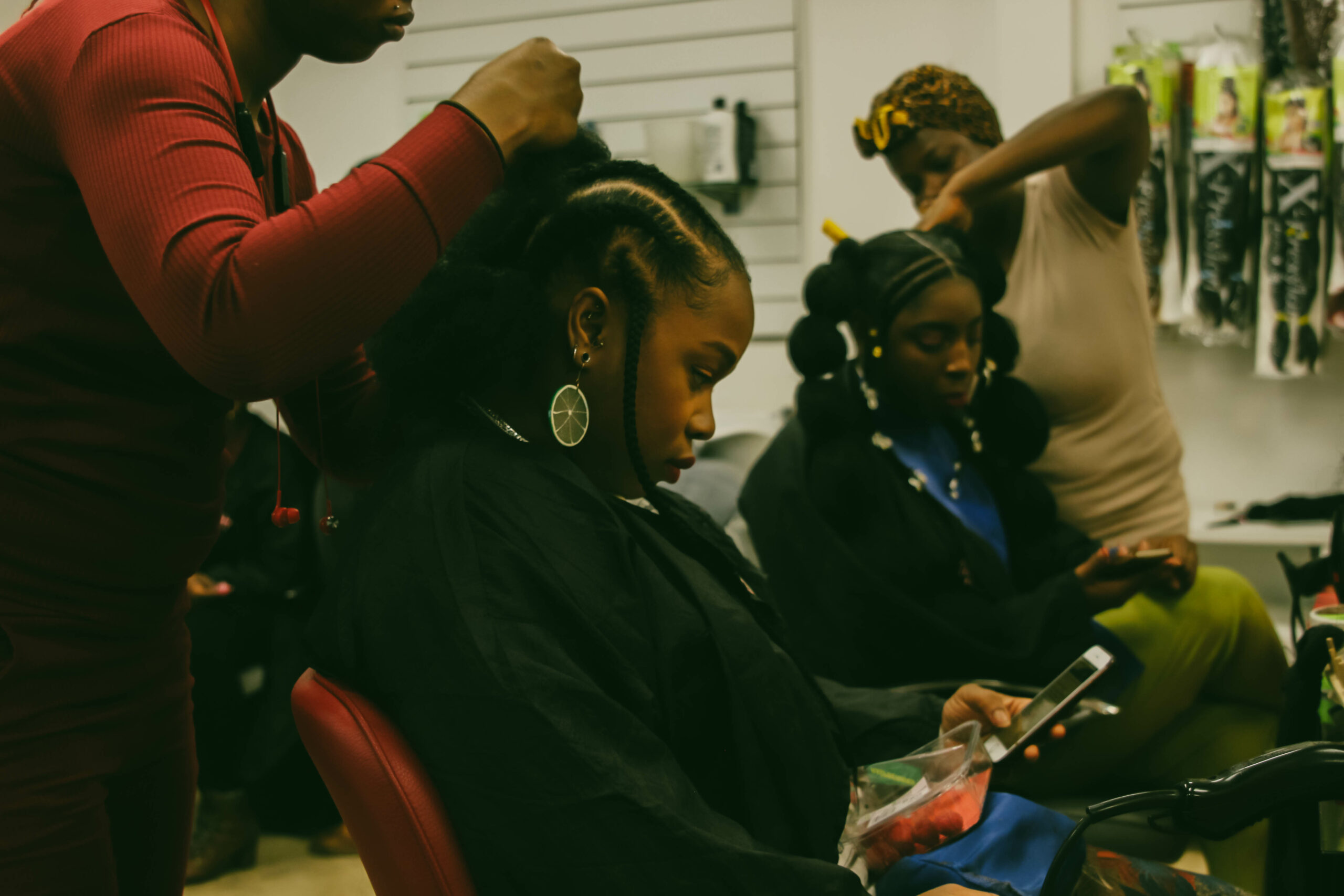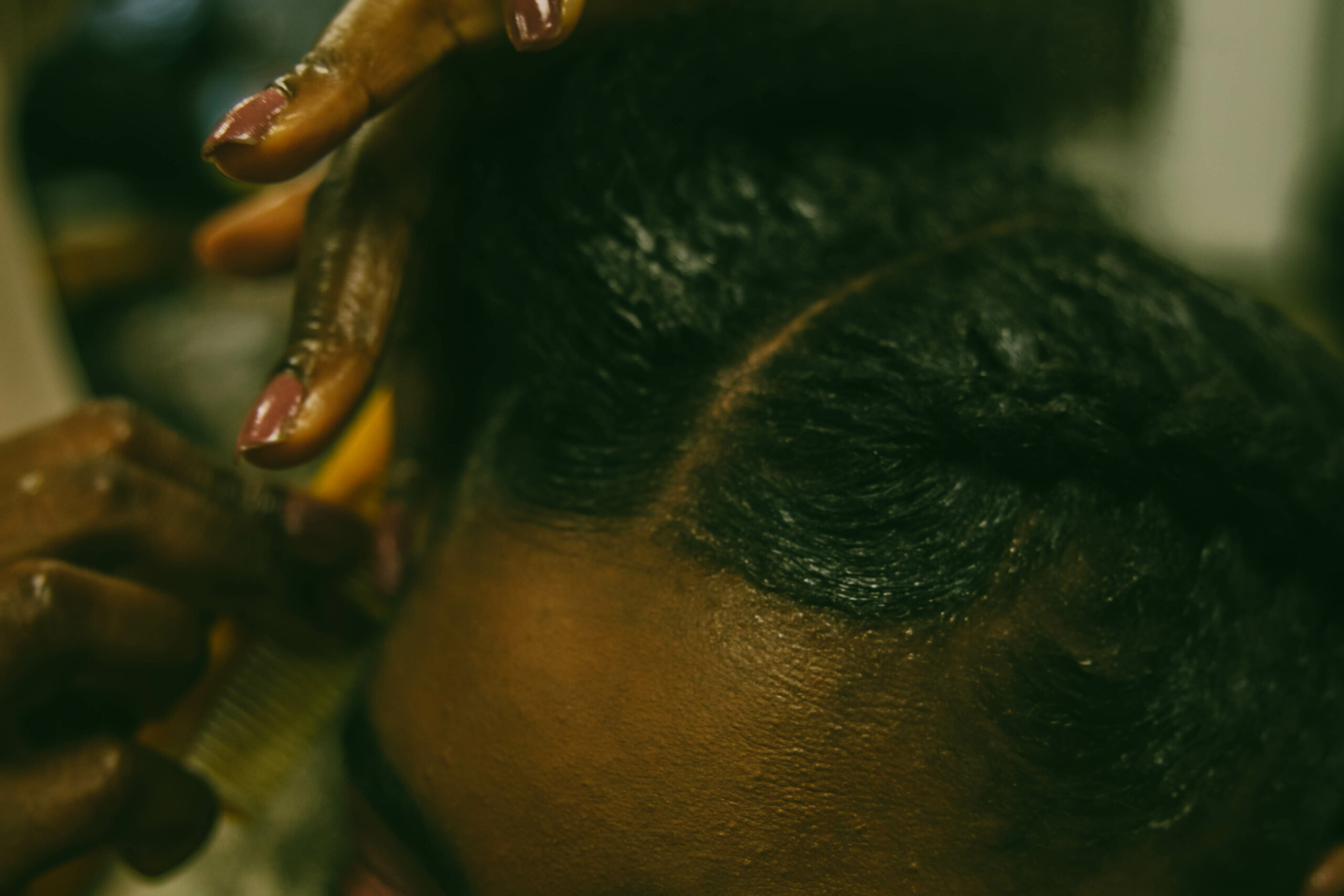
Photography by Yossy Akinsanya / Peckham Palms
Afro Answers: why you don’t need to shine or define your curls and how microlinks work
Trichologist Ebuni Ajiduah explores why tightly coiled hair doesn't have to be glossy to be healthy, and suggests a new hair extension method to try out on your afro.
Ebuni Ajiduah
20 Dec 2020
2020 will go down in history as one of the strangest years but in terms of hairdressing and trichology, it was pretty tame. The closure, then re-opening then closure of local salons meant that people took matters into their own hands and mostly had a positive experience. It allowed people the chance to reconnect with themselves and audit what was actually working.
For me, lockdown brought a chance to connect with more women from further afield who I may not have been able to help because of distance. I had to learn how to instruct people to take pictures at just the right angle and it really tested my knowledge as sight and touch were basically removed. This year changed how we work and hopefully also how we treat ourselves. With all my pieces I hope you laugh and leave armed with information to help you make informed choices about your haircare!
Does my afro need to be glistening?
There is a lot of higga hagga around curl typing in general. Besides the fact that the hair typing system initially didn’t include the most common afro texture, one of the more problematic takes is that defined hair is more hydrated or somehow healthier than non defined hair. This is not a bad boy piece of information! Curls do not equal hydration.
The texture of your hair is genetically determined and will inform the shape of your follicles. Afro hair and curly textures are usually grown from elliptical or oval follicles. These push the hair out at an angle and are flatter than other hair types. The hair itself tends to curl or twist in different directions, due to chemicals on the surface that are attracted to each other and hold the shape in place.
Let me get back into science teacher mode and do a quick chemistry lesson. The bonds that give hair its strength are called disulphide bonds. These are the ones that get broken during relaxers, bleaching and heat damage. Because afro hair grows at an angle it forms more of these bonds – essentially holding the curl in place. The structure of curly and afro hair means that more of the hair moves in different directions and the hair is closer to itself and surrounding hairs so it can form more of these strong bonds.
While it has more of these strong bonds, the constant changes in shape of the hair actually form two of the biggest myths and complaints associated with this texture. You might think that more bonds mean stronger hair, right? But actually, every curl and kink is an area of weakness in the strand. This area is more delicate and prone to damage; making it the most fragile hair type. Think of the shape of a curl as a “U”. The area at the bottom is most prone to damage as the hair changes shape and can often be thinner or twisted. Sisters, our hair is delicate. Change your prayer point from faster growth to length retention.
The second myth is that because afro hair lacks lustre, it is dry. But afro hair and curly textures with irregular patterns look the way they do because when light hits an uneven surface it tends to scatter and disperse rather than being reflected. Straight hair reflects light more like a mirror because the surface is even, as do uniform curls. Tightly coiled and afro hair is often more varied in shape and doesn’t reflect light as well. When you define or straighten the hair, the surface becomes more uniform and shiny, giving the illusion of healthy hair.
Many people end up using excess product to try to and achieve an unnecessary shine. Try the swipe test – use your normal amount of moisturiser, apply to the hair and leave for 30 mins. Swipe your hand over hair and check your palm for residue. If your hand is greasy, you have too much product. Next time you need to apply the product, try half the amount and keep reducing until none is transferred to your palm. Hint – use the recommended amount of product. That’s usually a small amount of good quality products; a few drops of oil, a nail size (regular degular nails not the bad b extendo) amount of butter.
This not only saves you money on product, but helps you to learn how your hair feels when it is properly moisturised rather than just looking so.
Are microlinks the new weave?
Most of us are very familiar with weaves and wigs as a method of extensions for Black women, while clips-in straddle the racial fence. But microlinks (also known as microbeads or braidless weaves) are often seen as white only. I want to blur the lines for those who are looking for something new. Microlinks are not for the faint-hearted but the seasoned extension wearer who already has a good handle on their hair and wants to add length, volume or colour while looking super natural.
Microlinks are small sections of hair attached with a metal/plastic or glue bead close to the scalp. (To be honest, it is so similar to pick and drop – just without the braids and has leave out, like conventional weaves.) Microlinks, just like every other method, have lots of different variations that are fundamentally the same, just the install or hair can be slightly different.
The method you choose should be discussed during a consultation with your chosen stylist. They will advise you on the best method for your hair and ideal finished look. Like with any service provider, do your due diligence, look for client pictures/reviews and find out where they trained and how long they have been working. Make sure you trust them before you part with any money. Well-regarded UK salons that do the style include Junior Green and House of Hair, both in London.
Despite the small beads, you should experience the same amount of shedding after take down as other extension styles. Your hair is secured at the root by the link system. Until it is removed, shed hairs are trapped in place. Minimise breakage and matting by brushing regularly and drying hair after washing to prevent tangles. It is really important to treat the hair as good, if not better, than your own.
In terms of pricing, unfortunately, it sure ain’t cheap! An install can last up to 5 hours and the hair is usually human so you do the maths. Plus, the style can be worn for months at a time in any direction and you can part it anywhere and see scalp so expect to pay for the privilege.
Pros
Can be done on any hair type; you just need to find a texture match or blow-dry/silk press (relaxed hair has the upper hand here).
It’s super versatile. As the links are small and individual, you can part the hair anywhere and wear it up down or whatever.
The extensions can be coloured or heat styled.
Your hair regime can still be followed – great for scalp care or those sensitive to synthetic hair.
The extension will last longer than other methods.
The links are reusable in most cases.
Cons
Pricey installation – it lasts a long time and is a more involved process so can cost more upfront.
Prone to damage with bad install or poor home care. I would avoid glues as there is more chance of a mistake with unskilled practitioners and removal can be tedious. If there is too much tension at the install, speak up!
It involves a lot of upkeep as the hair needs to be treated like your own.
This is part of the Afro Answers column. If there are any afro hair questions you would like answers to in a future column, email them to charlie@gal-dem.com with the subject line “Afro Answers”









